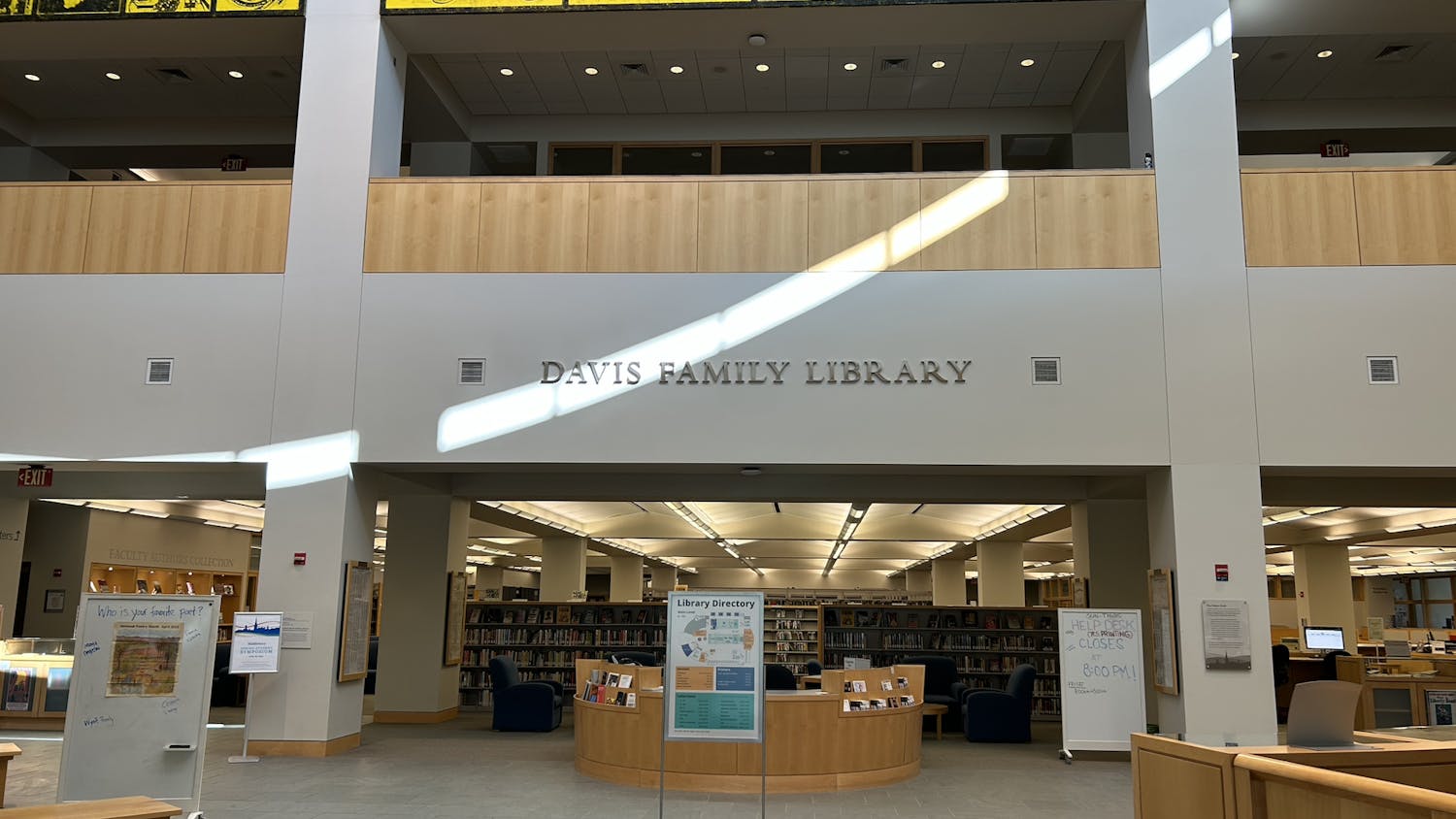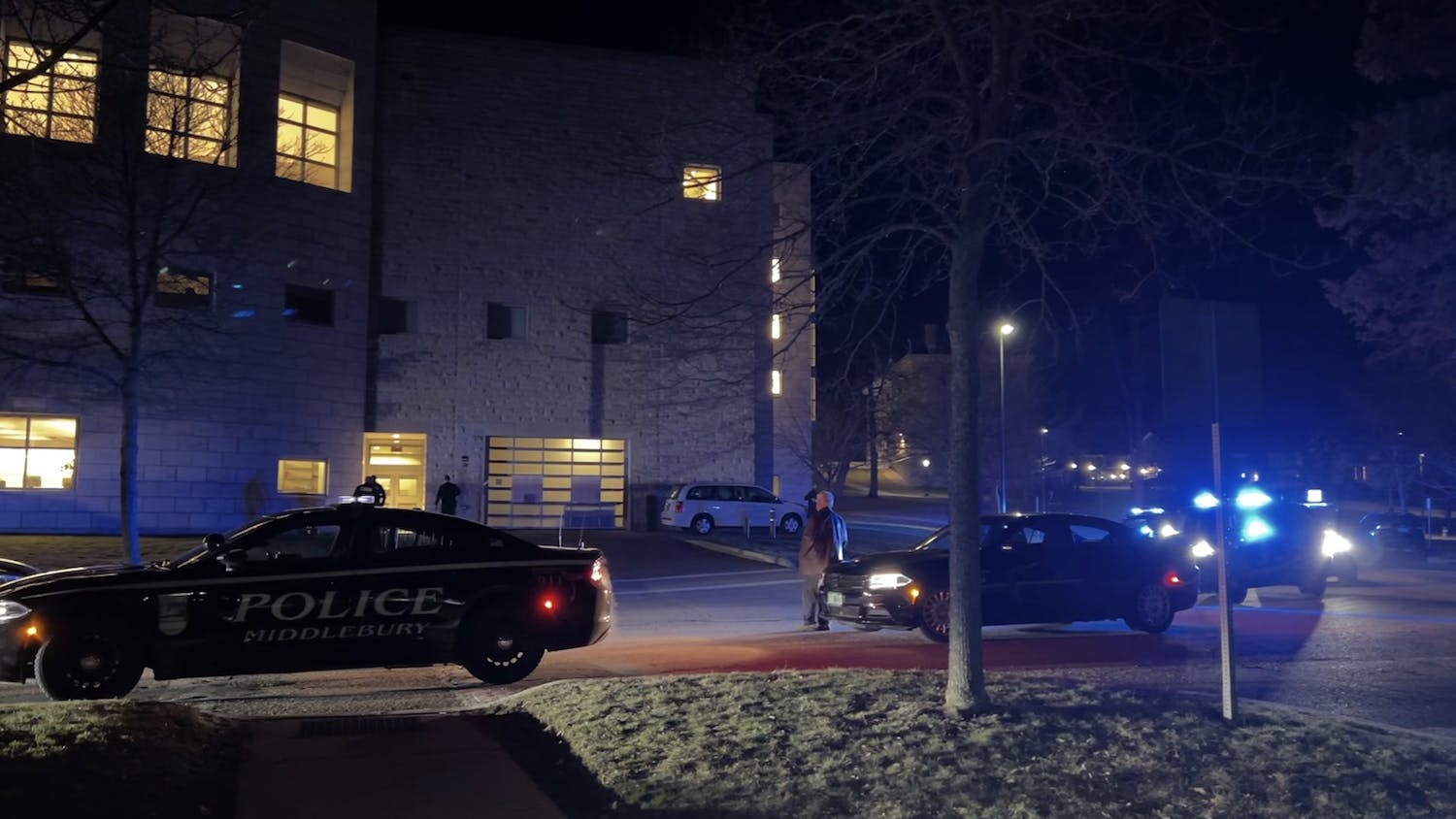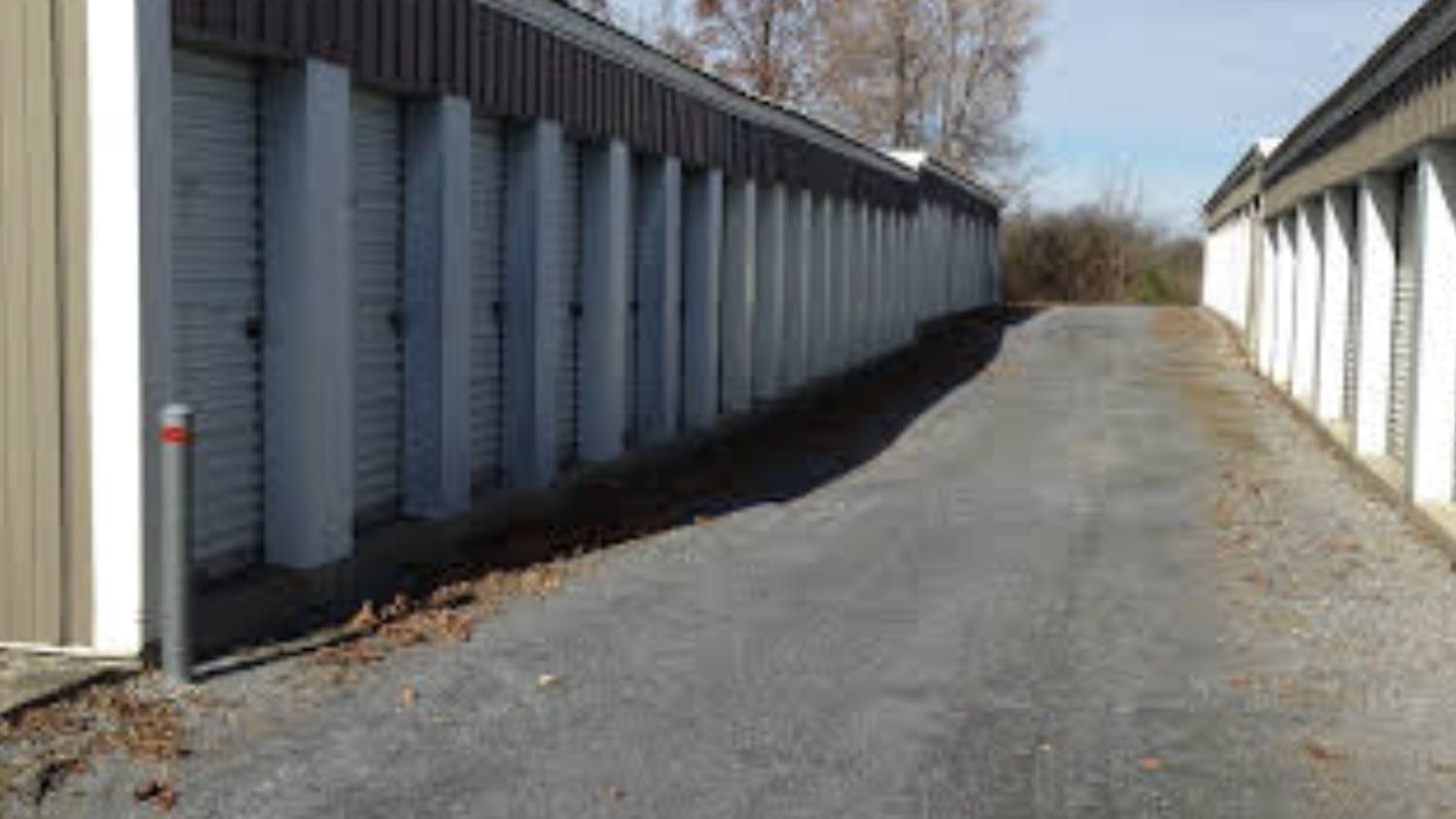At 10:28 p.m. on Sunday night, the college received a call reporting an ongoing shooting and mass casualty incident in the Davis Family Library. After an investigation that included a search and evacuation of the building, law enforcement concluded that the call was a hoax — one of an increasing number of swatting calls targeting academic institutions. But for an hour and a half — while many students hid in dark rooms and behind barricaded doors, while others were confronted by armed police and escorted to guarded safe zones — the threat appeared incredibly real. By failing to quickly inform the campus community about the event, the college left students to bear the burden of responding on their own during the crucial hours of the situation.
The college did not send out a MiddAlert emergency notification for almost an hour and a half after they received the false report. Middlebury received the call at 10:28 p.m., law enforcement responded at 10:30 p.m. and the college sent a MiddAlert message informing students that there was “a report of an active shooter at the Davis Famiy [sic] Library on campus” and the threat was likely not credible at 11:54 p.m. This message came after nearly all students in the library had been located, interviewed and evacuated by law enforcement.
Prior to the dissemination of this message, students inside and outside of the building had received no official communication about what was going on in the library — including whether or not the threat was credible. Instead of getting clear, authenticated and up-to-date information from the college, our community had to rely on dubious information shared through text group chats and social media. Rumors spread alongside accurate information. An anonymous Facebook post claimed that a police scanner had reported an individual in a suicide vest in the library. A community member posted on YikYak claiming that they had heard gunshots.
Parents compared anecdotes on Facebook and attempted to assess the safety of their children. Students anxiously watched the flashing lights of cop cars on the MiddCams library livestream. Unsure who to trust, a group of students barricaded themselves in Dana Auditorium and refused to come out until the officer sent to escort them home could provide proof of identity.
And still, everyone wondered where the emergency alert from the college was. Why was there no information about what was happening, who was on the scene and what students were supposed to do?
In conversations with The Campus, administrators said that they initially held off on sending alerts because they were concerned that — given that law enforcement had informed them the call was likely not credible — sending an alert might result in avoidable panic.
“Initial consideration was given to whether use of RAVE [MiddAlert] would cause unnecessary panic given that there was no actual evidence of an active shooter in the library or anywhere else on our campus,” Sue Ritter, chief risk officer, wrote in a Wednesday statement to The Campus.
And yet, the lack of immediate communication about the potential threat, the presence of armed law enforcement officers and the impression of credibility resulted in an environment of fear and panic that put the onus on students inside the unfolding situation to spread the word. In this attempt to curb unnecessary panic, the college’s belated update ultimately created more chaos and uncertainty, which was exacerbated by untrue and conflicting information.
Students in the library felt a responsibility to inform their peers, with some telling friends and housemates to get inside and lock their doors. But these were the people who should have been least involved in alerting campus — in an actual active shooter scenario, students picking up phone calls and revealing the secure locations where they were being hidden via social media could have posed a serious threat to their safety.
But there was seemingly no one else who stepped up to inform campus about what students in the building then believed to be a genuine active shooter threat. And, given that Middlebury does not hold active shooter or lockdown drills, many inside and outside of the building were unfamiliar with the proper protocol for such a scenario.
Students were left to decide how best to respond based on previous, sometimes limited, knowledge about proper responses to potential gun violence. A range of reactions ensued — although some turned off their lights, closed blinds and identified escape routes, others were confused and simply waited to hear from the college without stopping their work or were even on their way to the library, unaware of the threat, as law enforcement conducted their search.
Inside the library, many students realized what was going on when they were met with officers in tactical gear who pointed guns at them and told them to put their hands up so they could be escorted to a safe location. Seemingly, the college failed to realize how, beyond the fact that many students still believed there was a genuine threat of a shooter in the building at that point, the experience of rounding a corner and having a rifle pointed at them would almost certainly be frightening and traumatizing. Had students received a message that law enforcement were responding to a potential — yet likely fabricated — threat, they might have sought out safety rather than being confronted with a rifle on their way to the bathroom.
Of course, the decision to send out alerts should be carefully assessed by the emergency response team. But given how this situation went down, we have to ask, what are the circumstances under which the MiddAlert system will be used if not in the case of a potential active shooter? Students are owed greater transparency about the criteria and process for sending such alerts — both so they can understand what went wrong on Sunday and so they can have a better idea of what to expect in future emergency situations. Three days later, this information has still not been communicated with students.
The administration said that there was not enough substantiated evidence that warranted triggering the emergency notification system. But this did not stop other institutions who also experienced swatting calls on the same night from sending an immediate message or warning. At Boston University, the first alert was sent out simultaneously with the arrival of law enforcement and read, “two calls for an active shooter have been received by BU Police [...] Nothing has been discovered at this time, but there is a heavy police presence in these areas. An update will be sent out when we have more information.”
An active shooter situation requires an immediately communicated response. An alert could rapidly notify students to take action immediately, potentially offering them more time to assess their best strategy. We have a centralized system in place to provide students with clear and accessible information — yet, in the hours lacking official alerts, rumors heightened fear and paranoia.
The college finally communicated with students after most had received unofficial information from students in the building that the situation had been resolved. The school asked everyone to “shelter in place until further notice.” The contradictory information only elevated the level of confusion that was a direct result of the school’s failure to communicate quickly.
In addition to the college’s failure to communicate effectively and timely, Middlebury also failed to prepare campus community members for a potential emergency of this severity.
There has never been an active shooting or lockdown drill at any point during the past four years. The unfortunate reality is that Middlebury cannot assume it will be spared from gun violence: American college campuses have experienced deadly shootings in recent years. In recent months, schools and colleges have also received an uptick in false reports of active shooters or bomb threats. That same Sunday, alongside Middlebury, Wake Forest University and Boston University received hoax reports.
When the college did eventually send out a belated MiddAlert message asking students to “run, hide, fight,” they did not account for how these words might be unfamiliar to international students or students who have never undergone gun violence training or drills. At the very least, the college should provide training for relevant student workers and residential assistants on how to proceed during an active shooter threat.
If the goal in delaying the emergency alert was to prevent panic, this was an utter failure. If the goal was to avoid spreading fear about unsubstantiated and likely not credible threats, this was an utter failure. From our communication with administrators, we know alerts were not held to keep students’ ringers from going off and revealing their locations in the library — which many students assumed was the explanation for the delay. The college was aware early on that the threat was likely not credible: The call came from off campus and the description provided by the caller was inconsistent with what law enforcement saw when they entered the building, Ritter’s statement said. But rather than sharing this information immediately — especially the crucial fact that the threat was likely fabricated — the college allowed the campus to speculate and spiral for an hour and a half.
The administration also shared with The Campus that part of the reason for the timing of the alert was that they did not have a pre-populated message in the MiddAlert system specifically for a low-credibility threat with a high law enforcement presence. “Once we decided to activate RAVE [MiddAlert] we needed to create a new message template that accurately and succinctly addressed the situation. This contributed to the delay,” Ritter wrote. It took the college an hour and a half to draft a five-sentence email, three-sentence text and brief automated call. And yet, one Editorial Board member said she and a friend inside the library called every Middlebury student in their contacts before the college’s shelter-in-place message even went out.
We know the college Crisis Management Team is reviewing protocol and developing “new alert protocols for situations that involve a low credibility threat with a substantial police presence on campus.” We urge them to consider student experiences in this situation as they make decisions about how to keep our community safe in the future.
Our trust in the college’s ability to keep us safe and make the right calls in an emergency has been severely eroded by the response to Sunday’s situation. It is imperative that the college works to rebuild a sense of security and trust on this campus — and that starts with immediate transparency and clear communication, both about Sunday’s event and for all emergency situations that may emerge in the future.




